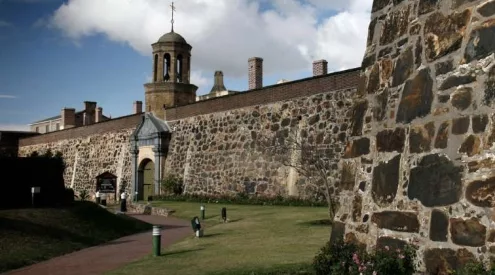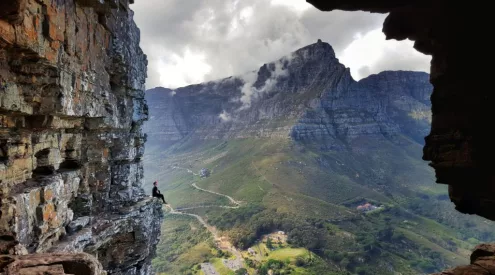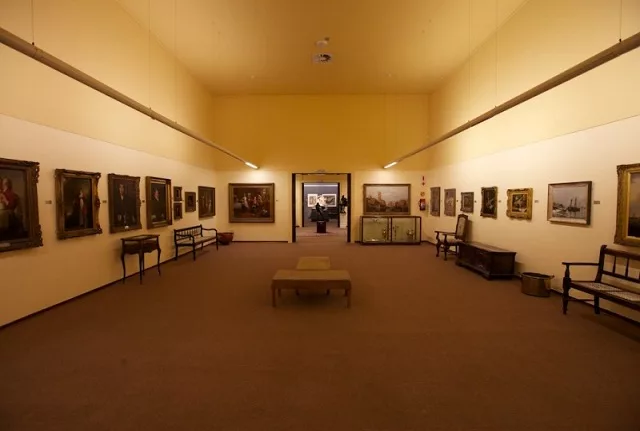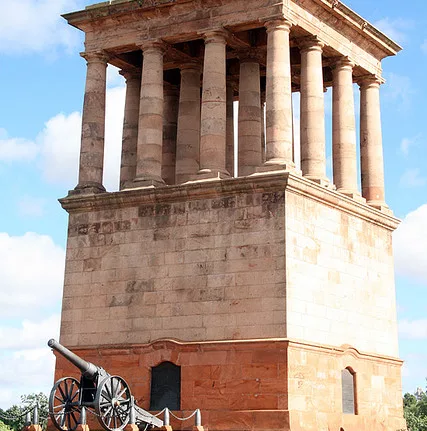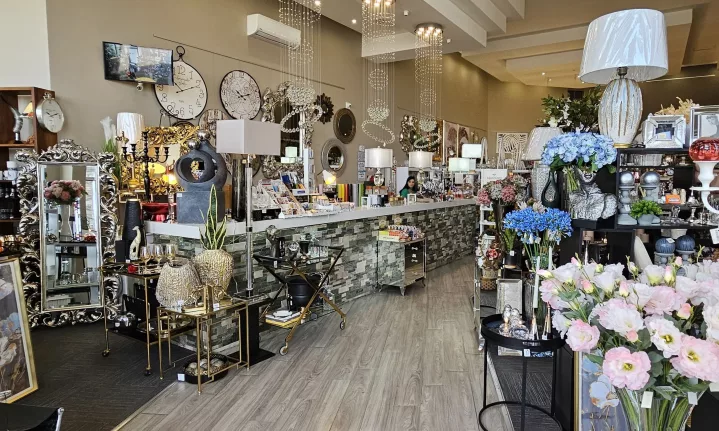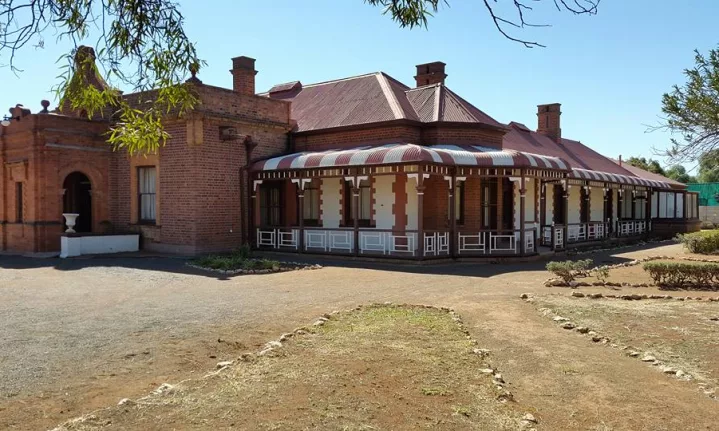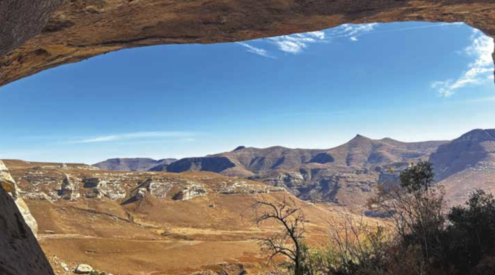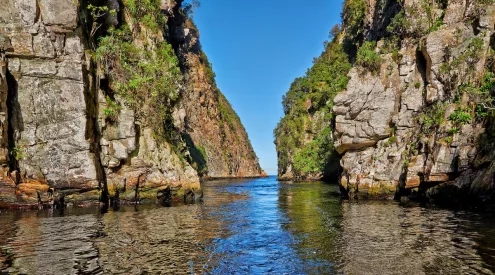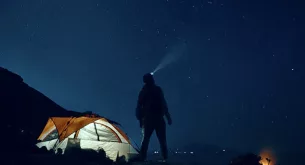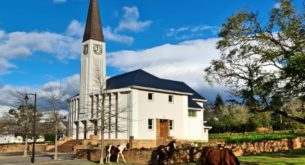Welcome to Kimberley, a sparkling gem in South Africa’s crown, where history and modern allure blend seamlessly. Known as the diamond city, Kimberley’s origins trace back to the 19th century diamond rush, shaping it into a historical marvel. Today, it stands as the vibrant capital of the Northern Cape Province, offering a rich tapestry of attractions for every kind of traveler. Check out our list of Places to visit in Kimberley.
From the awe-inspiring Big Hole to the meticulously recreated Kimberley Mine Museum, this city promises a journey through time. With its lush gardens adorned with historical memorials and a range of outdoor adventures, Kimberley is more than just a mining landmark—it’s a treasure trove of experiences waiting to be discovered. Join us as we unveil the top places to visit and things to do in this captivating city, where every corner tells a story of resilience, beauty, and the indomitable spirit of discovery.
1. The Big Hole
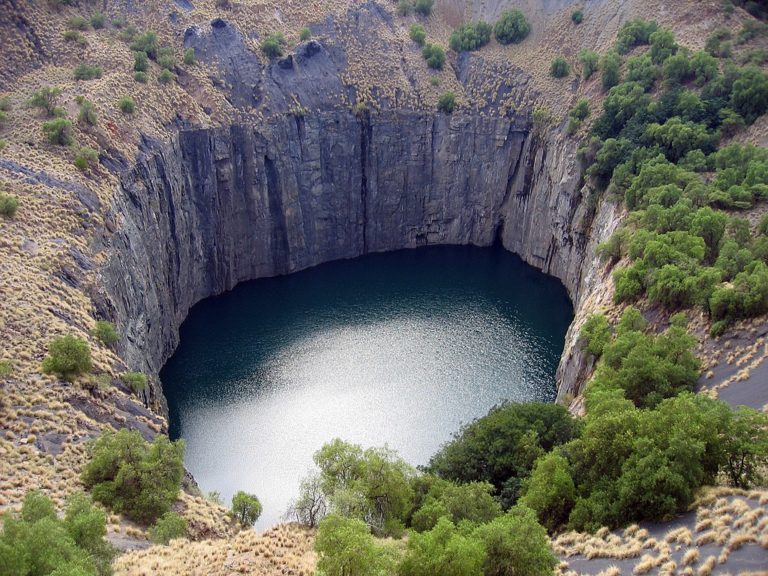
Picture: Getaway Gallery
Venture into the heart of South Africa’s diamond history at The Big Hole in Kimberley. This vast chasm, stretching over 17 hectares with a 1.6 km perimeter, is a testament to the diamond fever that seized the nation.
It all began in 1866 when a young Erasmus Jacobs found a pebble on the Orange River’s banks, leading to the discovery of a precious diamond. This sparked a frenzied diamond rush, resulting in the extraction of 2,722 kilograms of diamonds and leaving behind the awe-inspiring Big Hole. Today, this site is not just a gaping wonder but a museum narrating the gripping story of the Diamond Rush. A visit here is a journey through time, offering an underground experience, a stroll through the Old Town, and a glimpse into the diamond vault.
2. William Humphreys Art Gallery
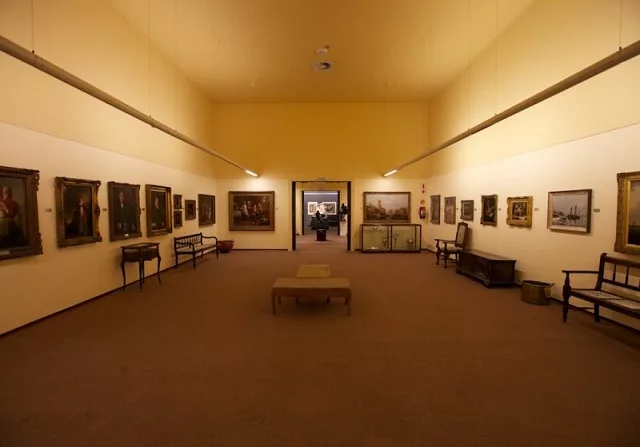
Discover the artistic heart of Kimberley at the William Humphreys Art Gallery, a cultural jewel opened in 1952, proudly bearing the name of its primary benefactor. This gallery, a sprawling treasure trove of art, astounds with its size and the warmth of its staff. For a minimal fee of R5, and free entry for children, it’s an unmissable experience for residents and visitors alike. Marvel at the rich collection spanning from 17th-century paintings to modern exhibits, encapsulating a vast timeline of artistic expression.
Our recent revisit to this extraordinary museum was met with the same passionate and welcoming staff, though sadly the delightful tea room is now a memory lost to COVID. However, the gallery’s extensive art collection, meticulously displayed, remains a joy to explore. Support for this vital cultural institution is crucial, as it battles to preserve the legacy of fine art amid challenging times. While photography inside is restricted, the gallery’s exterior also boasts impressive artwork, inviting artists and art enthusiasts for a must-visit experience in a city where such a gem is a pleasant surprise.
Also read: 5 unusual things to do in the Northern Cape
3. Giftly Surprize Gift And Decor Shop
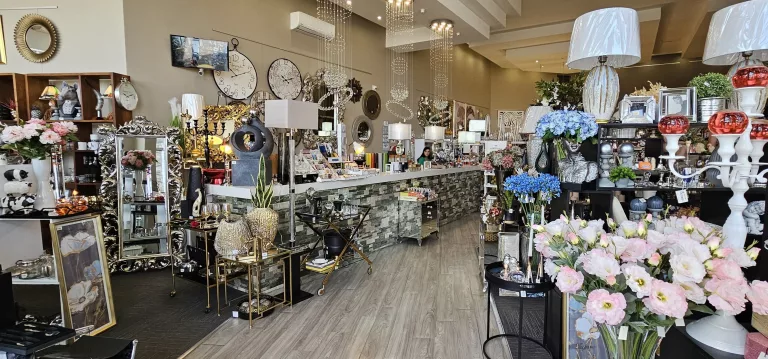
Picture: Facebook / Giftly Surprize Kimberley
The Exclusive Gift and Coffee Shop in Kimberley stands as a beacon of elegance and variety, attracting visitors with its unique offerings. Here, each gift is a conversation starter, wrapped in a distinct style that elevates the art of giving. The shop boasts an array of artificial flowers, crystal glassware, and sophisticated home décor. Frames, both modern and classic, align the walls alongside an impressive selection of indoor and outdoor lighting, including statement-making chandeliers.
4. Duggan-Cronin Gallery
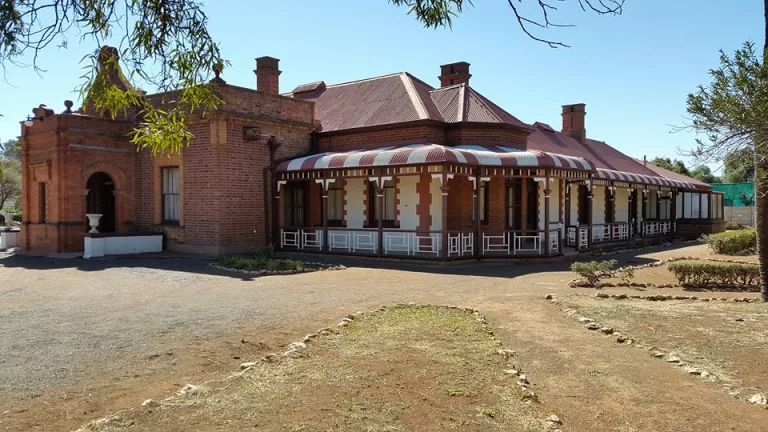
Picture: Facebook / Benedene Basson
The Duggan-Cronin Gallery in Kimberley, a branch of the esteemed McGregor Museum, offers a unique glimpse into the rich cultural history of southern Africa through the lens of prominent photographers. This gallery, housed in the historical building known as ‘The Lodge,’ showcases the impressive works of Alfred Martin Duggan-Cronin, Aubrey Elliot, Jean Morris, and Alice Mertens. Their photographs, spanning from 1919 to 1980, capture the traditional lifestyles and attire of indigenous peoples, many of which have since faded into history.
‘The Lodge,’ originally built in 1889 for John Blades Currey of the London and South African Exploration Company, later became part of the De Beers estate. It served various roles, from a residence for De Beers’ executives to a guest house, before being donated in 1938 by the company to the Kimberley City Council. This donation was specifically to preserve the Duggan-Cronin Collection, with Alfred Duggan-Cronin himself serving as its first curator.
Duggan-Cronin, who arrived in Kimberley in 1897 and worked in the De Beers compounds, was inspired by Maria Wilman to embark on expeditions across tribal areas. His aim was to photographically document the indigenous tribes before Western influences altered their traditional way of life. Today, the McGregor Museum diligently maintains this valuable collection, ensuring that visitors can step back in time and experience the cultural richness of southern Africa’s past.
5. Mokala National Park

Expect to see giraffe, eland, gemsbok and nyala in Mokala National Park. Photo by Teagan Cunniffe.
Mokala National Park, established on 19 June 2007 in the Plooysburg area southwest of Kimberley, Northern Cape, South Africa, presents a unique sanctuary where endangered species thrive. Spread over 26,485 hectares, Mokala, named after the Setswana word for the iconic Camelthorn tree (Kameeldoring), Acacia erioloba, is a testament to the diverse and rich flora of South Africa. The park, showcasing an array of Camelthorn trees with their gnarled and twisted forms, ranges from small, spiny shrubs to grand trees stretching up to 16 meters with wide, sprawling crowns.
The park’s landscape, encompassing a sprawling 27,500 hectares, is a blend of koppieveld (hills) and vast open plains, marked by isolated dolerite hills that impart a sense of serene seclusion. These contrast starkly with the expansive sandy plains to the north and west. Small tributaries stemming from the hills feed into these plains, eventually flowing into the Riet River along the park’s northern boundary. This varied topography makes Mokala a crucial zone for the regeneration and preservation of numerous valuable species.
6. Star of the West
Pause for refreshment at the Star of the West, the second-oldest pub in South Africa, a place steeped in history and character. Established in 1870, this pub exudes old-world charm with its classic wooden swinging doors and a yellowwood bar top, believed to have been salvaged from a shipwreck by sailors. The Star of the West stands as a testament to resilience and camaraderie, originally serving as a haven for shipwreck survivors and later becoming a popular gathering spot for thirsty miners during the diamond rush.
Celebrating over 146 years of continuous service, the Star of the West offers more than just drinks; it provides an immersive historical experience. Visitors stepping through its doors are transported back in time, greeted by the creak of the wooden floors and the echo of conversations past. As one of Kimberley’s most historic landmarks, it’s a place where stories of the past converge with the present. Patrons can savor a cold beer, connect with locals, and enjoy the pub’s recent renovations, which have beautifully preserved its rich heritage.
For those visiting Kimberley, a stop at the Star of the West is an essential experience, offering a unique glimpse into the city’s storied past.
Also read: Kimberley shines bright like a diamond
7. The Rudd House
The Rudd House, a 19th-century architectural marvel, harbors a reputation as one of the most haunted houses in South Africa. Erected in the 1880s, this historic structure was initially designed to be a modest four-room dwelling. However, over time, it underwent numerous renovations, transforming into the grand manor it is today, complete with an elegant veranda. Known colloquially as ‘The Bungalow,’ the house stands on the very ground that once hosted the residence of Charles Dunnel Rudd, the esteemed business partner of Cecil John Rhodes and co-founder of Gold Fields of South Africa Ltd. Its rich history, coupled with tales of paranormal activity, makes the Rudd House a fascinating and mysterious fixture in the historical tapestry of Kimberley.
8. Kamfers Dam
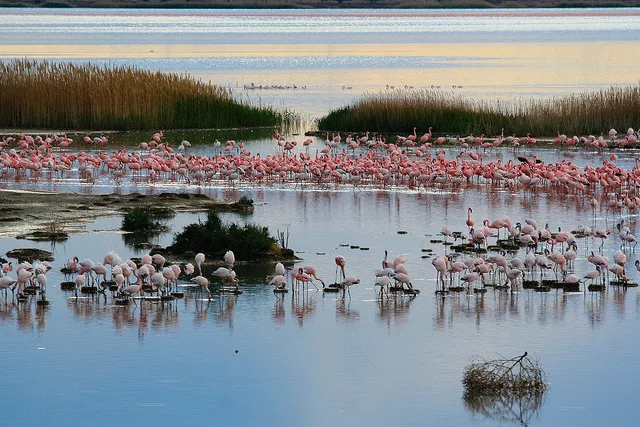
A Lesser Flamingo breeding colony in Kamfers Dam, Kimberley. Photo courtesy of Winston67
Kamfers Dam, located just a stone’s throw north of Kimberley, South Africa, presents an extraordinary spectacle for nature enthusiasts. This 400-hectare permanent wetland, originally an ephemeral pan reliant on rainfall, has transformed into a vital habitat for an astonishing array of birdlife. It stands out as one of only four breeding sites in Africa for the lesser flamingo, attracting birders and nature lovers alike to witness its pink-hued residents.
Each year, thousands of lesser flamingos converge at Kamfers Dam, drawn by the abundant algae that thrive in its waters – a primary food source for these filter-feeders. Estimates suggest the algae quantity reaches a staggering 750,000 kg, making it a veritable feast for the flamingos. The dam, a mere six kilometers from Kimberley, supports the largest Lesser flamingo breeding colony in Southern Africa, with numbers ranging from 60,000 to 80,000, accounting for over half of the region’s population.
This avian haven is not just a birder’s paradise; it’s a vital ecosystem, playing host to more than 2,000 bird species, excluding the flamingos. However, the sanctity of Kamfers Dam faces threats from unchecked sewage and housing development, endangering its fragile ecosystem and the lesser flamingos that depend on it. To learn more about conservation efforts and how to contribute to the preservation of Kamfers Dam and its flamingo population, interested parties are encouraged to reach out to organizations like Save the Flamingo or BirdLife South Africa.
9. Honoured Dead Memorial
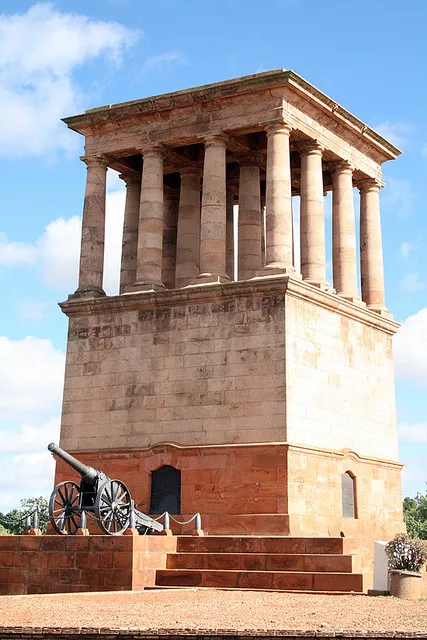
Photo from flowcomm
The Honoured Dead Memorial, a provincial heritage site in Kimberley, stands as a poignant reminder of the city’s turbulent past during the Anglo-Boer War. Positioned at a unique convergence of five roads, this memorial pays tribute to those who valiantly defended Kimberley during the Siege. Its commanding presence is felt from each approach, serving as a solemn testament to history.
Despite suffering from vandalism, a reflection of the challenges in preserving historical sites in South Africa, the monument remains a significant site. Commissioned by the renowned Cecil John Rhodes and constructed by mineworkers, it features a canon used against the Boers in the Siege of Kimberley. This piece of history, a symbol of resilience and struggle, calls for greater preservation efforts. It is a poignant reminder of the city’s legacy, demanding respect and care for the stories it embodies.
10. Germar Biltong Mekka, Padstal & Petting Zoo
Germar Biltong Mekka, Padstal & Petting Zoo, a delightful destination since 2005, is renowned for its exceptional offerings. From their famous Biltong & Droëwors to enchanting Alfheim Fairy Haven, this spot provides a unique experience. With no admission fees, the Petting Zoo is a highlight, offering safe and fun interaction with a variety of farm animals, perfect for family outings and school trips.
Immerse yourself in the tranquil world of Fairyland, amidst fairies and dwarfs, where you can escape the hustle of life and embrace the magical atmosphere. The friendly staff welcomes guests to explore an array of homemade delights like Biltong, Jaffles, and more, complemented by a comfortable seating area. For families, the animal interaction and ample kid-friendly activities make it a must-visit. The farm stall, bursting with delicious treats and traditional products, adds to the charm of this relaxed, slightly out-of-town haven. Parking is ample, albeit with a stony surface, enhancing the rustic experience.
Follow us on social media for more travel news, inspiration, and guides. You can also tag us to be featured.
TikTok | Instagram | Facebook | Twitter
ALSO READ: 8 top photo spots in the Northern Cape

